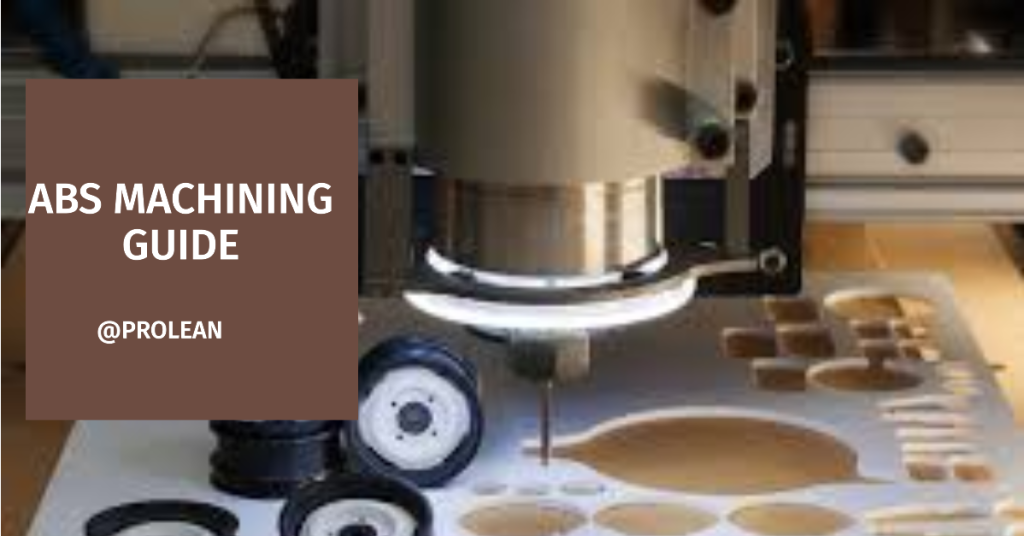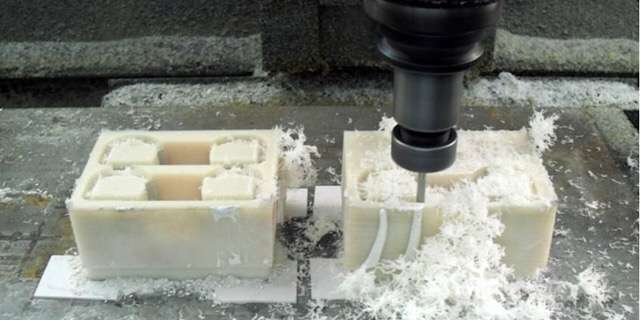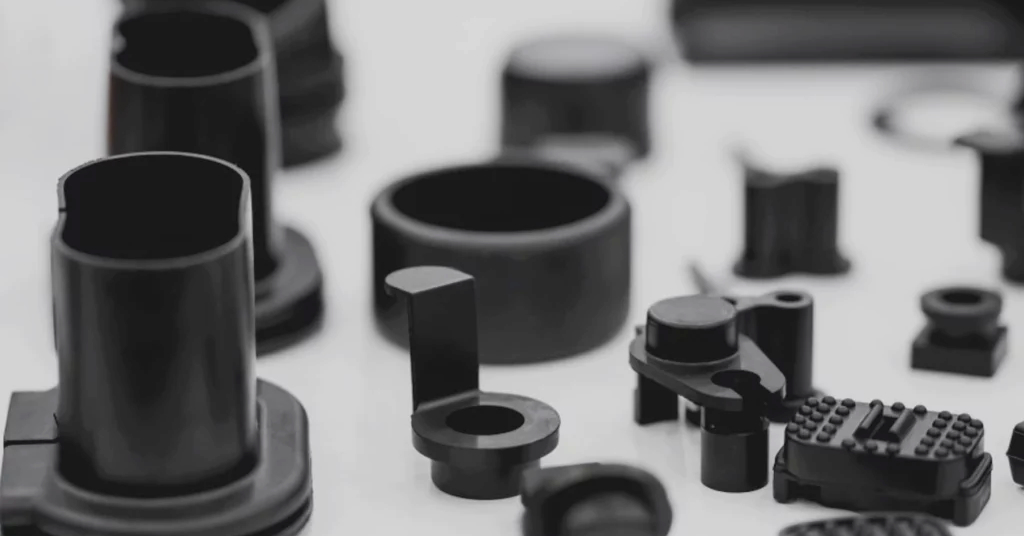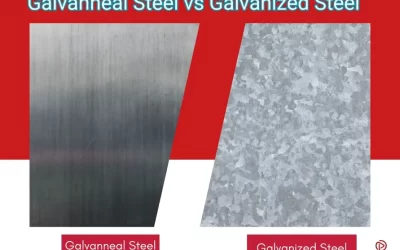“For desired ABS parts with exact specifications, you need to understand the process, challenges, and its advantages.”

The high strength, durability, thermal stability, and impact resistance of ABS thermoplastic make it popular for a wide range of applications. You can see the ABS parts in automotive, aerospace, medical, electronics, and other industries. However, which prominent manufacturing methods are used to create ABS components or products? ABS Machining is the most precise and effective process.
Furthermore, this article will discuss the machining process of ABS plastics, including CNC integration, advantages, challenges, and comparison with the ABS injection molding technique.
What is ABS Machining?
It is the subtractive manufacturing strategy of achieving the desired shape by removing materials from the ABS workpiece. Different machines and cutting tools are used for the material removal. Meanwhile, the impact resistance of ABS supports the machining as it does not get damaged as the tool applies pressure during the process.
Some examples of ABS machining equipment are milling machines, lathes, and turning centers. Machines can perform milling, drilling, turning, threading, profiling, and several other operations on ABS. Additionally, machining can produce parts with excellent finish and precision. Additionally, the integration of CNC technology in machining ABS plastic has transferred the machining process into a new era with higher precision, efficiency, and lower cost.
So, the machining of ABS can make diverse functional parts for applications where ABS Plastic Properties are essential for operational or functional needs.
Try Prolean Now!
The Conventional ABS Machining Process
Conventional machining refers to a human-intensive process without computer control, where the operator manually controls the machine to guide the tool or workpiece into the right cutting path. Traditionally, lather and milling machines are used for ABS-machined parts.
1. Lathe Machining
A lathe machine removes material from the outer surface of a revolving workpiece attached to the spindle. Meanwhile, the cutting tool is mounted on a toolpost that can move along two axes (X & Y). As the ABS workpiece rotates, the cutting tool contacts it and removes material along its length and diameter.
Lathe machining is suitable for cylindrical ABS parts like rods or shafts. It can process operations like facing, threading, drilling, and turning to obtain the intended geometry.
2. ABS Milling
In the milling machine, the cutting tool rotates instead of the workpiece. The milling cutter is mounted on the spindle, which can move along multiple axes to shape the work. The milling tool rotates at high speeds while the workpiece is fed into the cutter, and cutting edges remove the material from the machining area.
A Milling machine can execute cutting, drilling, boring, and other operations based on the tooling setup. Consequently, milling ABS is suitable for creating complex shapes on workpieces, such as pockets, slots, and curved surfaces. It is also flexible for custom parts and products like drone enclosures and insulators.
Although conventional machining can be used for different industrial needs, it is not as precise and cost-effective as CNC machining, especially for medium—to large-scale manufacturing. The minimal human intervention during machining and computer-controlled tool path ensure tight tolerances and very short production cycle times.
What is ABS CNC Machining?
The fundamentals of CNC machining are similar to conventional machining, except all the control is done by computer software, including tool movement, tool path, cutting speed, and depth.

ABS CNC machining
Here is the step-by-step process of ABS CNC Machining;
1. CAD Designing
It is the first step, where a detailed design of the intended component or product is created in computer software like AutoCAD and Solidworks. The design must include all specifications, such as dimensions, tolerances, features, fitting arrangement for assembly, etc.
2. ABS Grade Selection
Next, there are three major types of ABS plastics: high-impact, low-impact, and high- heat-resistant. Choose the suitable ABS grade based on your application requirements. At the same time, the cost of each grade must be considered.
3. Digital Instructions/ G-codes &
G and M-codes are the digital instructions that dictate the tool movements to cut the materials precisely. These codes can be obtained by processing the drawing using computer software like CAM. They also include the cutting path that the tool will follow for machining.
4. Tool Selection
Here, you must also choose the tools to machine the ABS plastic. Typically, high-speed steel tooling is used in ABS CNC Machining.
5. Machining Setup
This step includes attaching the ABS plastic workpiece to the work bed or chuck in the spindle, depending on which machine you are using. Also, align the workpiece and tool. Then, set the cutting parameters and load the G-code.
6. Machining and Monitoring
Once you execute the G-code, the CNC machines start to work, and the tool shapes the ABS material on a pre-determined path and rate. Meanwhile, coolants are applied to minimize the risk of thermal damage due to generated heat.
So, the process can show that CNC machining is preferred for cost and precision. It can create more complex geometries than conventional machines.
Here is the table showing some key differences:
Table: Conventional Vs CNC Machining or ABS Plastic
| Feature | ABS Conventional Machining | ABS CNC Machining |
| Process | Manual operation | Automated operation |
| Accuracy | Moderate | High |
| Complexity | Limited complexity | High complexity |
| Tooling Flexibility | Limited tooling flexibility | High tooling flexibility |
| Production Volume | Suitable for small batches | Suitable for large batches |
| Cost | Lower initial cost | Higher initial cost |
| Lead Time | Longer lead time | Shorter lead time |
Advantages of ABS Machining
Although ABS can be processed into finished parts with various methods, CNC machining of ABS offers various benefits, including precision, customization, and production flexibility.
- The machining processes can produce ABS-machined components of different shapes, sizes, and features.
- The CNC ABS machining can provide exceptional precision, for instance, ±0.005″ for linear dimensions.
- Machining ABS plastic can be used for custom shapes geometries.
- ABS plastic’s excellent mechanical & physical properties result in durable parts & products, regardless of application area.
- It is cost-effective for rapid prototyping and small-batch production.
- The Machining ABS parts can quickly processed with surface finishing to meet the desired smoothness and aesthetic.
- Compared to Injection Molding, machining ABS is quick, as there is no need for detailed molds or other heavy tooling.
Try Prolean Now!
ABS CNC Machining Cost
Like other machining projects, ABS machining cost depends on many factors, from the complexity of design & precision to the capability of the machining equipment.
Moreover, the cost significantly differs depending on whether you use conventional or CNC machining. Large-scale production with CNC is less costly, whereas conventional machines can machine low-cost abs pars if you just need a few items.
The following are the typical ABS Machining Cost Factors which influence the final costs;
- Design Cost
- Material Cost
- Tooling Cost
- Machine Cost
- Labour Cost
- Quality Control & Inspection Cost
- Surface Finishing Cost
- Inventory & Shipping Cost
These factors or breakdowns might also be different for different machining projects. For example, some parts might not need surface finishing if the as-machined finish meets the requirements.
To better understand the cost of ABS machining, let’s take an example of machining ABS for electronic housing.
- Product: Custom ABS Housing for Electronic Devices
- Size: 150 x 100 x 50
- Tolerances: ±0.2 mm for critical & ±0.5 mm for non-critical dimensions
- Finish (Ra): 0.9 μm for exterior surfaces and 1.8 μm for interior
- No of items: 50
| Cost Factor | Description | Cost |
| Material Cost | $2/pound × 50 pounds | $100 |
| Tooling Costs | $50 | $50 |
| Machine Setup Time | 2 hours ($3X20/hour) | $60 |
| Machine Cost | 2 hours × 50 items x $ 10/hr | $1000 |
| Labor Costs | 2 hr x 50 items x $20/hr | $200 |
| Overhead & Miscellaneous | (Material Cost + Setup Cost + Machining Cost + Tooling Cost + Labor Cost) × 10% | $321 |
| Total Estimated Cost | The sum of all costs | $3531 |
| Cost per part | Total cost/ 50 items | $70.62 |
(Note: It is an example of cost estimation; it might differ from one design to another based on complexity and other factors)
ABS Machining Applications

ABS machining parts
ABS-machined parts and products are everywhere, from automotive and electronics to everyday items. Their low weight and sufficient mechanical properties can fulfill the different operational and functional needs of applications. Furthermore, the versatility of ABS CNC machining can handle complex designs and custom features.
Table: ABS Machining Applications
| Application Area | Examples of ABS machining parts |
| Automotive | Grilles and vents, door handles, bumpers, headlamp housings, dashboard components, interior trim panels, etc. |
| Consumer Electronics | Housing for laptops, tablets, smartphones, audio amplifiers, and other electronics. |
| Industrial | Jigs and fixtures, tooling, conveyor parts, valve bodies, bearings, robotics components, machinry enclosures, and prototyping components. |
| Medical | Equipment enclosures, handles for surgical devices, prosthetic components, medical furniture, carts, and more. |
| Aerospace | Cabin interiors, cockpit components, structural parts, drone housings, satellite components, and various parts prototyping. |
Is there any Alternative? ABS Injection Molding
Besides CNC machining, ABS plastic parts can be made with other approaches like 3D printing, vacuum forming, and injection molding. Among these, ABS Injection Molding is particularly popular for ABS large-scale production.
The injection molding method involves injecting the molten ABS into an injection mold at high pressure. The liquid ABS then flows inside the mold cavities and takes shape. Next, after cooling, the solidified part is ejected from the mold, and the same mold repeats the subsequent cycles.
Although the initial mold making is more expensive for Custom ABS Plastic Molding than the tooling cost of machining, the durability of the mold makes the parts cheaper than CNC machining in mass-production. The less cycle time and repeatability due to mold reduces the per-part cost significantly.
Table: ABS Injection Molding Vs. CNC Machining
| Factor | ABS Injection Molding | ABS CNC Machining |
| Tolerance | ±0.1 to ±0.5 (typically) | ±0.02 to ±0.1 mm |
| Surface Finish | Often requires post-processing for smoothness | Minimal post-processing required |
| Complexity | Les flexible for complex geometries | It can handle complex geometries with intricate details |
| Production Volume | Higly economical for large production runs | Suitable for small runs |
| Lead Time | Longer lead times due to mold manufacturing and setup | Shorter lead times for prototype and low-volumes |
Try Prolean Now!
Challenges of ABS CNC Machining
First, the workpiece might be wrapped or melted during the machining, mainly due to a need for the proper tooling and parameters. Next, the internal stress of ABS might cause deformation and other surface defects. These two are the main ABS machining challenges associated with ABS plastic properties. Furthermore, other precision, tool wear, and surface finish challenges are also there.
1. Dimensional Challenges & Tool wear
Workpiece instability or slight tool deflection is enough to cause dimensional inaccuracies. Therefore, the workpiece and tool must be tightly held and aligned before the process. Tool defection also causes rapid tool wear that might add to the tooling cost and even damage the workpiece.
2. Thermal Distortion Challenge
The friction of the tool and workpiece generates heat, which can result in the thermal expansion of ABS work. The heat can melt the machining areas and leave burn marks. The right tool material, cutting-edge geometry, and coolant are necessary to avoid this. For example, sharp cutting edges facilitate effective chip removal and help to create a smooth finish. Meanwhile, water-based coolants can be applied while machining ABS plastic.
3. Surace Finish Issues
Incorrect tool geometry and cutting variables(speed, depth) are the main reasons for surface finish issues in milling ABS plastic. The tool might trace the cutting marks and burrs or chips could be attached to the machining surface. For example, geometries preferred for ABS machining include single flute end mills or high helix/clearance end mills with positive rake angles.
4. Post-Machining Considerations
After machining, deburring or other further surface finishing might be required to ensure the quality and functionality of machined ABS parts. The deburring process removes sharp edges and burrs, whereas finishing techniques like sanding, polishing, or painting improve the aesthetics and performance.
We have 3 & 5-axis CNC Machines for ABS Machining
At ProleanTech, we handle all types of ABS CNC machining projects regardless of their complexity. We have 3 and 5-axis Universal CNC machines and different specialized Milling and lathe machines for plastic parts & products.
Our experienced engineers work closely with clients and factory operators to achieve the desired results. The custom tooling, in-process monitoring, and quality control system at ProlenTech can ensure a high standard of ABS plastic parts for diverse industries. Therefore, send us your design to leverage our precise yet affordable CNC machining services to grow your startup or established business.
Try Prolean Now!
Summing Up
The machining processes precisely shape the ABS material with various operations, cutting, drilling, milling, turning, etc. Its lower setup time and flexibility with complex design make ABS machining suitable for diverse components across industries. Moreover, the use of CNC machines to manufacture the ABS parts significantly reduces the cost of prototyping & small batch production, while improving the precision and lead time as compared to conventional lather or mill machines.
However, some challenges regarding tool alignment, thermal damage, and dimension inaccuracies can affect the final quality. However, solutions and considerations exist to address such issues.
FAQs
Can I CNC machined ABS plastic?
Yes, ABS plastic can be CNC machined according to design specifications.
Is ABS CNC machining expensive?
Typically, it is cost-effective to machine ABS parts. However, the overall cost might depend on part complexity, tolerances, and production volume.
What are the challenges in ABS machining?
You can face challenges like managing ABS properties such as heat resistance and brittleness. Additionally, there is a risk of surface defects like burrs and warping during machining.
Are machining ABS parts durable?
Yes! Machined ABS parts are generally considered durable. However, the exact life of a product part depends on ABS grade, post-processing, and operational conditions.




I need few Custom ABS parts with moderate tolerance (0.125mm)? Do you think manual lathe can achieve this?
Yes, You can! Infact, our CNC ABS machining services are offered in almost as same as manual lathes. You can send your design if you want to know further details